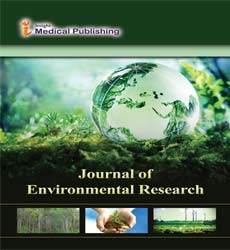Toward a correct measure of third-hand exposure
Abstract
Statement of the Problem: While exposure to secondhand smoke (SHS) is a well-established problem, exposure to third-hand smoke (THS) is scanty known and needs to be studied. The objective of this work is to characterize salivary cotinine concentrations among people who self-reported exposure to SHS and THS at home. Methodology & Theoretical Orientation: Longitudinal study of a representative sample (n = 736) of the adult population (≥ 16 years) from the city of Barcelona carried out in 2004-2005 and 2013-2014. A questionnaire on tobacco use and passive exposure was administered, and a saliva sample was collected for cotinine determination. For this study, the information of the non-smoker participants who provided saliva sample was used. The geometric means (GM) and geometric standard deviations (GSD) of the cotinine concentration were compared according to the type of self- reported exposure at home: (1) Not exposed to SHS or THS; (2) Exposed to SHS and THS; and (3) Only exposed to THS. We used log-linear models to compare the cotinine concentration of each exposed group with respect to the unexposed group, adjusting for sex, age, educational level, and tobacco exposure in other settings. Findings Our study shows differences in salivary cotinine according to type tobacco smoke exposure at home, being salivary cotinine concentrations higher among SHS and THS, and only THS exposed individuals, when comparing with non-exposed ones. In addition, we found no difference in the salivary cotinine concentrations when comparing SHS and THS exposed individuals with only THS exposed individuals. This pattern was kept in baseline and follow-up. Conclusion & Significance: In spite of all the limitations (i.e. SHS and THS exposure are overly intertwined, lack of markers of THS as home dust or hand nicotine levels), our results seem to be a good approximation of the distinctly tobacco exposure between the proposed groups.
Open Access Journals
- Aquaculture & Veterinary Science
- Chemistry & Chemical Sciences
- Clinical Sciences
- Engineering
- General Science
- Genetics & Molecular Biology
- Health Care & Nursing
- Immunology & Microbiology
- Materials Science
- Mathematics & Physics
- Medical Sciences
- Neurology & Psychiatry
- Oncology & Cancer Science
- Pharmaceutical Sciences
